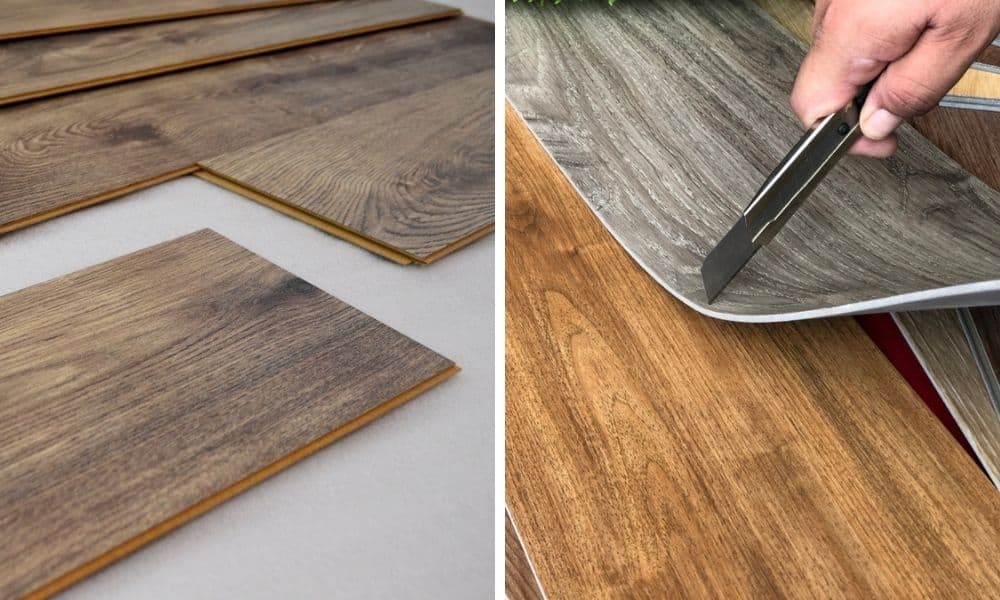

They look so much like wood, you need to rack them like wood! Most manufacturers use several patterns, so you need to make sure to mix up the planks when racking the floor before installation. The surface of laminate planks can be incredibly close in appearance to the real thing.
/GettyImages-933302268-4793e6f1672f4a5a92d0d17906c45ce1.jpg)
It looks amazingly like wood because high-definition photography captures the wood grain as well as the color of the wood. Laminate flooring includes a picture of real wood. LVP is clearly superior when it comes to durability. In addition, if the wear layer on the laminate isn’t treated for UV light protection, laminate flooring will fade in the sunlight. Less density with laminate flooring means less durability. You either end up wasting planks or living with scuffed and dented edges. But if you accidentally tap laminate flooring too hard, you can mar the edges during installation. Both types of floors are click-lock with a tongue and groove. And that density is important when installing floors too. LVP flooring is great for use with pets, kids, and anything else that’s tough on floors. Remember all that talk about density? Well, that density converts to durability once the flooring is installed. Now that we know how vinyl and laminate differ in construction, let’s see how those differences translate to durability and appearance. Starting with an integrated underlayment on the bottom, then the SPC core next is the decorative vinyl layer, covered by the wear layer, and topped off by a layer of ultraviolet (UV) light protection. So, bring on the heavy furniture! LVP gives better resistance to damage from denting and scratching.Īnd the other layers? Ambient stacks them high.
:max_bytes(150000):strip_icc()/SPR_1822800-vinyl-vs-laminate-flooring-5ae8c7b3ba61770036738c2e.png)
This base is made from limestone, polyvinyl, and chemical stabilizers. Instead of a soft, chipped wood or particleboard base, LVP has a base made of Stone Polymer Composite (SPC). And the core layer is where you find the biggest difference between laminate and vinyl. Luxury vinyl plank (LVP) flooring is like a flooring parfait on steroids. That leaves the vinyl layer and the wear layer susceptible to scratching and denting, especially from heavy furniture or furniture on casters. Because it lacks strength and density, it doesn’t provide a ton of support (pun intended). That particleboard base is a really soft material. Technically, you could call laminate flooring “wood flooring” because the base is made of recycled chipped wood waste. There’s a base of particleboard, covered by a picture of wood grain, and topped off by a thin clear wear layer. Planks of laminate flooring are like a basic flooring parfait. Before comparing the products, let’s start by defining what we mean by laminate flooring and vinyl flooring. In a head-to-head matchup, who would win the laminate vs vinyl flooring showdown? How does luxury plank vinyl compare to laminate flooring? They are both alternatives to solid wood, engineered wood, or tile/stone flooring. The answers may surprise you.Ĭomparing Luxury Vinyl Plank to Laminate Flooring – The Big Picture Let’s compare and see if one is better than the other. The initial costs associated with laminate flooring are typically lower than that of vinyl, with labor and materials starting at around $1 per square foot for laminate (versus $2 per square foot for vinyl).Shopping for flooring and confused by the options? Both luxury vinyl plank flooring and laminate plank flooring offer two economical options for engineered flooring. And though vinyl is incredibly scratch-resistant and impervious to water, making it ideal for pretty much any space, laminate can be damaged when exposed to too much moisture, due to its fiberboard core (so it’s best to avoid using wet-cleaning methods). While vinyl can last up to 20 years, laminate flooring typically needs to be replaced every ten years or so. Vinyl, on the flip side, is usually cold and hard to the touch, making it a poor choice for cozy spaces such as bedrooms, dens, and living rooms. Since laminate has a thicker composition and is partly made of wood, it offers a slightly softer and warmer feel. #3 Laminate is more comfortable underfoot. The same can’t be said for laminate, which requires you to remove the previously existing flooring before setting down a new layer. #2 Vinyl can be installed directly over most existing floors. Many people prefer the look of laminate to vinyl since the former often showcases superior imagery that lends floors a more realistic appearance. Read on for five important points to chew on before taking your pick! #1 Laminate looks more convincing. Choosing between the two? There are a few key differences to consider before deciding which is better for your space.


 0 kommentar(er)
0 kommentar(er)
